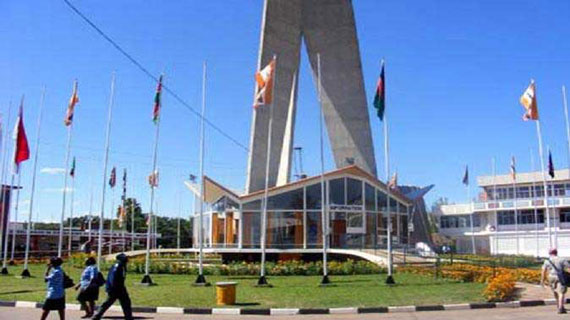Will Zimbabwe Gold work or not? Unpacking why the new currency (ZiG) will fail?
Honourable Ambassador Christopher Mutsvangwa held a press conference (recently) and as usual he went on a rampage calling me all sorts of names because I raised reservations on the new currency — the Zimbabwe Gold (ZiG).
I thought it fair that I provide a breakdown of the reasons why the ZiG will fail. The ZiG will not be killed by Gift Mugano’s negativity as Ambassador Mutsvangwa would like to insinuate but by massive policy missteps mainly by the Reserve Bank of Zimbabwe (RBZ) and Treasury as well as the absence of structural policies.
- Reducing interest rate from 130 percent (ie, 10,8 percent/month) to 20 percent (ie 1,67 percent/month).
One can be forgiven to think that the RBZ is assuming that backing the ZiG with gold and cutting the zeros, the ZiG is in the same league with gold and USD, hence the decision to bring down annual interest rates to 20 percent. The reality is that ZiG is as good as ZWL and the economic environment has remained the same, that is:
a) Volatile exchange rate — the black-market exchange rate has continued to run away — we hear that it is now trading at ZiG20 (equivalent of ZWL$50 000) against USD;
b) Inflation remains high;
c) Our disposable incomes and aggregate demand have not increased because the zeros were cut;
d) Dwindling foreign currency supply caused by the double tragedy of declining export receipts (as a result of fall in commodity prices) and draining of foreign currency as a result of food imports caused by drought.
It is my humble view that RBZ’s decision to lower interest rate is a serious policy misfiring that comes with massive consequences:
(a) Unproductive lending — any rational bank would institute measures aimed at defending its asset base from shrinking. Investment into housing development and properties stands out as the most attractive investment option. In circumstances like these, there are high chances that less resources will be channelled towards the productive sector. This will militate against the survival of the ZiG. Strong currencies are backed by production — resulting in less imports and increase in exports;
(b) Speculative borrowing — without contradicting with (a), for “obvious reasons” the banks will still lend the productive albeit it will be reasonably lower than yester years. However, anyone who pounces his/her hand on this cheap money will run to the parallel market and buy forex and service the loan by capitalising on the exchange rate spiral whilst making massive profits in the process.
- Financing of the 25 percent export retentions
The RBZ will retain 25 percent of the exports and is supposed to credit the account of the exporter with ZiG at the prevailing rates. In subsequent points below, I logically derive the problem:
(a) If we take an average annual export receipts of US$7,5 billion annual, it follows that the 25 percent export retention is US$1,875 billion. This amount must be converted into ZiG;
(b) The Governor indicated that the total reserve money balances are around ZWL$2,6 trillion, that is, around US$80 million;
(c) The question which arises is that where is the Governor going to get the money to pay for the US$1,875 billion (ie, US$156 million per month) when the ZiG equivalent in the entire banking sector amounts to US$80 million, that is, half of the monthly export retention requirement?
(d) In this puzzle, it is my humble view that there is no scope to give exporters financial instruments such as Treasury Bills (TBs) because exporters are already in dire stress as a result of falling commodity prices. Is it not given that the Governor will print money to fund the forex retained from exporters (ie, US$156m per month) and distabilise the rate?
- Export retention and non-disbursement of auction funds saga
On April 8, 2024, the Governor issued Exchange control directive RZ56/2024, where he declared that:
(a) Outstanding auction allotments areas which have been accumulated by the RBZ for several weeks will be converted into a two-year ZiG denominated investment (TBs) at the prevailing exchange rate and will earn an annual interest rate of 7,5 percent;
(b) All outstanding payments for the foreign currency purchased by Treasury under the 25 percent surrender requirement will be converted into one-year ZiG denominated investment (treasury bill) at the prevailing exchange rate and will earn an annual interest rate of 7,5 percent;
This is a saga and an unprecedented move by the apex bank. It introduced the auction system and business participated in it with faith that everything is under control only to realise later that they cannot get back their monies.
This is not right.
This has multi-faced implications on businesses from different angles:
(a) This is a direct violation of the property rights which is synonymous to appropriation of business monies. This is tragic. It raises despondency and worsen the trust and confidence levels which are required to foster the acceptability of the ZiG;
(b) These funds are obviously part of the working capital of the affected businesses. This means that a number of companies are under serious stress — their going concern is affected.
(c) The Governor categorically made it clear that these outstanding balances will be converted at the prevailing exchange rate of USD/ZiG, that is, at ZiG13,56 (ie, ZWL$33 882,72) to USD yet some of these balances were held by the central bank when the rate was ZWL$6 000 (as at December 2023), that is, ZiG2,4.
This effectively means at the time on April 8, 2024, when the directive was issued by the esteemed Governor, capital of businesses was eroded by the Governor’s directive by more than six times — business working capital is gone before we factor in further erosions which will be caused by inflation and exchange rate volatility in the next two years.
For starters, the 7,5 percent interest rate stipulated for these funds is a mere joke to say the least. At the end of the tenure of these instruments, the value of these monies will be nothing. If I was sitting on the boards of these affected companies, I would ask them to write off this debt and count their losses.
- Decision to convert excess ZiG balances into Non-Negotiable Instruments
The Governor’s decision to convert the excess liquidity held by banks to non-interest-bearing non-negotiable certificates of deposits (NNCDs) with a view to mop excess liquidity will entrench dollarisation and kill ZiG.
This policy directive is coming into effect against the background of the fact that the bank balances of the ZiG and USD stands at ZWL$2,6 trillion (equivalent to US$80 million) and US$2,4 billion, respectively.
Instead of the Governor promoting the use of ZiG by encouraging lending towards the productive sector, he is mopping the little ZiGs and leaves the USD balances dominating the banking sector. In this process, he is effectively promoting the USD and killing ZiG.
- Continuation of the Gold – Token (ZiG)
The question which is boggling the minds of many is how are the gold tokens going to be funded considering the fact that RBZ is still issuing the tokens and the cumulating sales of the gold tokens is approaching 1 000kg, that is, one (1) tonne of gold? Is this one tonne of gold part of the 2,6 tonnes of gold which is backing the ZWL$2,6 trillion?
The RBZ must come out clean on this as this is killing the little confidence remaining.
- Excess liquidity from Treasury
The funding model used by Treasury to pay for infrastructure development is very problematic and is anti-ZiG. As long as the Treasury pays contractors with ZiG, the exchange rate will continue to run away as these ZiGs are offloaded on the black market.
It is as simple as that. Instead of Government of Zimbabwe (GOZ) sending police after the money changers, the Treasury must close its tap.
On a separate note, is it not that the GOZ is exposing itself by setting police on money changers. If GOZ has enough gold and foreign currency reserves, why is it going after money changers, after all there is tight liquidity?
- Confidence
As a country, for the last 26 years (ie, from November 14, 1997) we lost several currencies (ZWD, USD, Bond note, RTGSs, ZWL, etc) and in the process we suffered massive losses in respect of jobs, savings, pensions, capital, medical aid, etc. Life has become unbearable. We suffered enough. As they say, once beaten twice shy, we are not taking any chances.
Citizens and businesses’ trust on a currency is driven by the Government of the day — if GOZ refuses the ZiG, how can it expect us to accept the same currency?
The Governor’s biggest mistake was to declare that he will not force ZiG on fuel stations.
His blunder was complimented by Treasury’s reluctance to accept ZiG in respect of Government services (such as passports) and payment of duties, taxes, fees and levies.
GOZ should have simply enforced the use of multi-currency regime in all its services and payment of duties, taxes, fees and levies. As it stands, ZiG is an orphan which has been rejected by its biological parents (GOZ).
If the biological parents of ZiG are refusing to take care of their own child ZiG, what motivates us (citizens) to parent this orphan? Honestly, what concerns a bird with toothpick if it has no teeth?
Still on confidence, the biggest undoing of the Governor was his failure to avail the ZiG notes on time and exposed the public to unfair pricing caused by lack of change.
If it is true that Dr Mangudya was giving in to pressures from GOZ, what makes him think that we will trust his “not under my watch” mantra will pass the test of time at Reserve Bank?
This, together with the cessation of payment platforms which negatively affected the general public to transact, worsened the confidence level — people are angry.
This situation is worsened by the fact that there were no extensive consultations which were carried by the RBZ. The issue of currency sensitivity was no longer an issue because President Mnangagwa had already indicated that his Government was going to introduce a structured currency.
He gave policy direction, right? At that point, RBZ should have hit the ground and hold stakeholder consultations across the country (town hall meetings, community meetings, dialogue with businesses and technocrats).
These consultations were supposed to be heart to heart consultations because they were supposed to be built on the understanding of the pain which citizens and businesses went through as a result of currency crisis. Most importantly, RBZ was supposed to listen to everyone’s fears, concerns and give them assurances. These assurances must be reflected in GOZ policies.
As it stands, the RBZ ambushed us and they want us to run with the ZiG when we have so much fears and have not cared to talk to us and build consensus so that we walk this ZiG journey together.
- Absence of robust structural policies
The ZiG must be anchored by production. Structural policies such as industrial, agricultural and trade policies must be recalibrated with a view to build a productive, exporting and prosperous economy.
The fact that we spend over US$4 billion annually importing commodities which we can produce locally — cereals, fruits and vegetables, soyabean, wheat, toothpicks, chewing gums, pampers, tissue and paper, etc it tells us that we need to relook at our policies with a specific focus to substitute imports.
Likewise, the fact that 92 percent of our exports are constituted by minerals (70 percent) and agricultural products (22 percent), tell us that we need to recalibrate our industrial and export policies with a view to change our exports towards diversified and value-added exports.
It is on the basis of the foregoing submissions that I have serious reservations of the success of ZiG.
Prof Gift Mugano
This article was previously published on Professor Mugano’s X-handle-eusinessweekly












